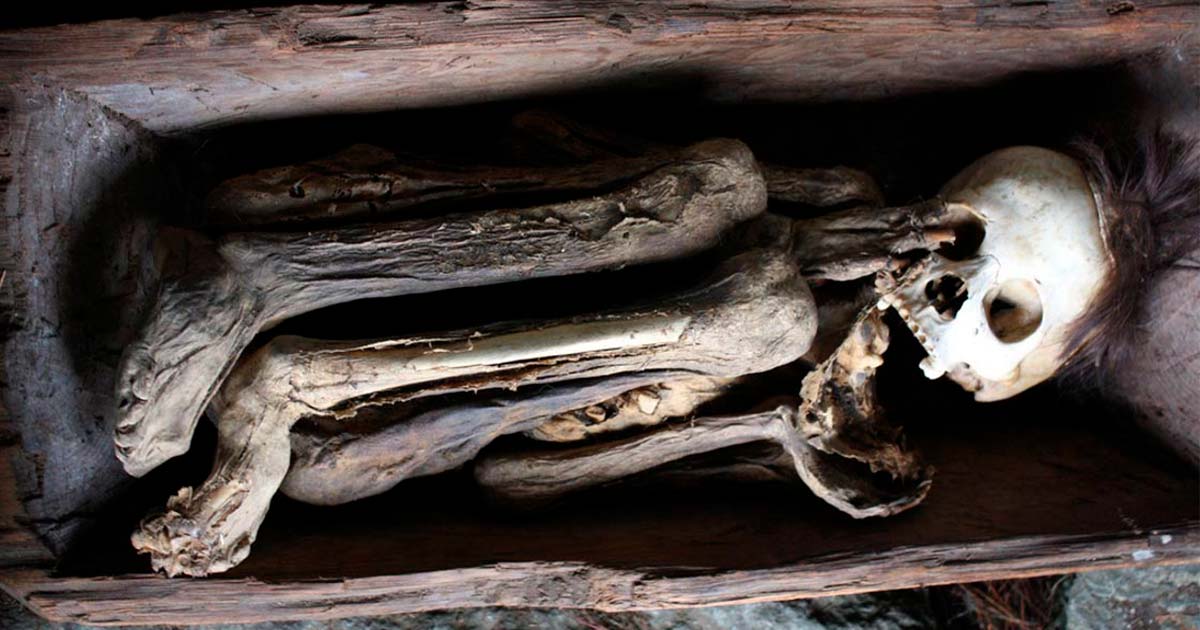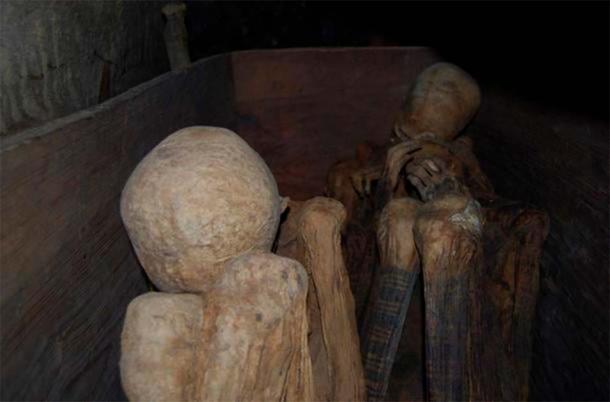
The practice of mummifying the deceased has been well-documented since ancient times. While the Egyptians are perhaps the most famous for their mummification process, characterized by bodies covered in gauzy wrappings, the Philippines has its own unique form of mummy known as the fire mummy.
Discovered in caves in the town of Kabayan, located in the Benguet province of the Philippines, the Kabayan cave mummies underwent a distinctive preservation method involving prolonged dehydration and smoking. These meticulously preserved remains offer researchers valuable insights into an unconventional mummification process and the tribal communities that practiced these methods.
The Elaborate Mummification Process: From Salty Beverages to Tobacco Smoke.
The Kabayan mummies, also referred to as the Ibaloi mummies, Benguet mummies, or Fire mummies, were discovered in numerous caves within the region, including Timbak, Bangao, Tenongchol, Naapay, and Opdas.
Smoking, an uncommon mummification technique, proved to be a highly intricate and time-consuming process, yet it successfully preserved many bodies over the years. Scientists estimate that the Kabayan mummies were crafted by members of the Ibaloi tribe sometime between 1200 and 1500 AD. However, the timeline is a subject of debate, with some scientists speculating that the practice of mummification dates back thousands of years. Despite discrepancies regarding its origin, there is a consensus that the practice ceased in the 1500s. With the colonization of the Philippines by Spain, the smoking mummification process fell out of use and was no longer practiced.

According to some beliefs, the smoking mummification process was reserved for tribal leaders exclusively. This distinctive mummification ritual was purported to commence even before death, with the individual actively participating in the initial stages.
As the individual approached death, they would consume a beverage with an exceptionally high salt concentration. Drinking saltwater is recognized for its dehydrating effects on the body, initiating the drying process before death occurs. Following the individual’s passing, the remaining steps of the mummification process would unfold. It is estimated that this comprehensive process spanned from several weeks to several months to reach completion.
The body underwent a thorough cleansing before being positioned in a seated stance above a heat source. The body was not directly exposed to open fire or flames but was elevated above smoldering kindling. Instead of burning the body, the gradual heat and smoke served to meticulously dehydrate the entire body. As part of the ritual, tobacco smoke was blown into the deceased person’s mouth to facilitate the removal of all fluids from internal organs.
Ultimately, the smoke-infused body was treated with herbs. After the completion of the mummification process, the body was carefully placed within one of the caves, where it would later be discovered.

The Precarious State of the Kabayan Cave Mummies: Concerns of Theft and Vandalism
Even today, the Kabayan mummies continue to reside in the caves where they were discovered. Despite the remote location of the caves, the looming threats of theft and vandalism have prompted the area to be recognized as one of the 100 Most Endangered Sites globally by Monument Watch. Furthermore, there is an ongoing consideration to designate it as a UNESCO World Heritage Site.
One mummy, distinguished as Apo Annu, gained notoriety after being stolen from the caves in the early 1900s. Apo Annu was adorned in attire typical of a tribal chief and was found in a crouching position. His mummified form displayed intricate tattoos, and Apo Annu was revered as a skilled hunter, believed to be a hybrid of human and deity. Eventually, Apo Annu was returned to the Ibaloi tribe, as his absence was thought to bring about natural disasters, including earthquakes, droughts, diseases, and poor harvests.
Upon Apo Annu’s return, the Ibaloi tribe reburied the mummy with the hope of reinstating the balance that had been disrupted by his disappearance. Although several Kabayan mummies remain stolen and unrecovered to this day, the return of Apo Annu signifies a collective desire to preserve and maintain the mummies in their rightful burial sites.

In the period from April 24 to May 3, 2017, the Museum of Natural History collaborated with the National Museum of the Philippines to document, identify, and assess fungi present in the mummies. The objective of this initiative was to develop strategies to extend the preservation of the mummies. This included evaluating the fungal presence since “increasing humidity levels within the caves can potentially harm the coffins, the mummified bodies, and the clothing in which they were interred.” However, the primary focus on protection involves implementing physical barriers and security measures to deter theft, vandalism, and damage.
The Kabayan mummies, which have endured through several centuries, remain endangered and may be at risk of disappearance and destruction. By designating the Kabayan caves as a protected site and keeping the location of some of the mummies secret, the caves and the mummies may be safeguarded against future looting and damages.
The Ingenious Legacy of the Ibaloi Tribe: Kabayan Mummies as Testaments to Ancient Practices
The Kabayan mummies stand as a striking example of the ingenuity of the ancient Ibaloi tribe and the painstakingly lengthy processes they would go through to tend to their deceased. To this day, the Ibaloi tribe considers these to be sacred burial grounds.
Hopefully, continued protections will allow the discovery of further information about the ancient Ibaloi tribe and the unique fire mummies, while preserving the sacred remains and the areas in which they were found.